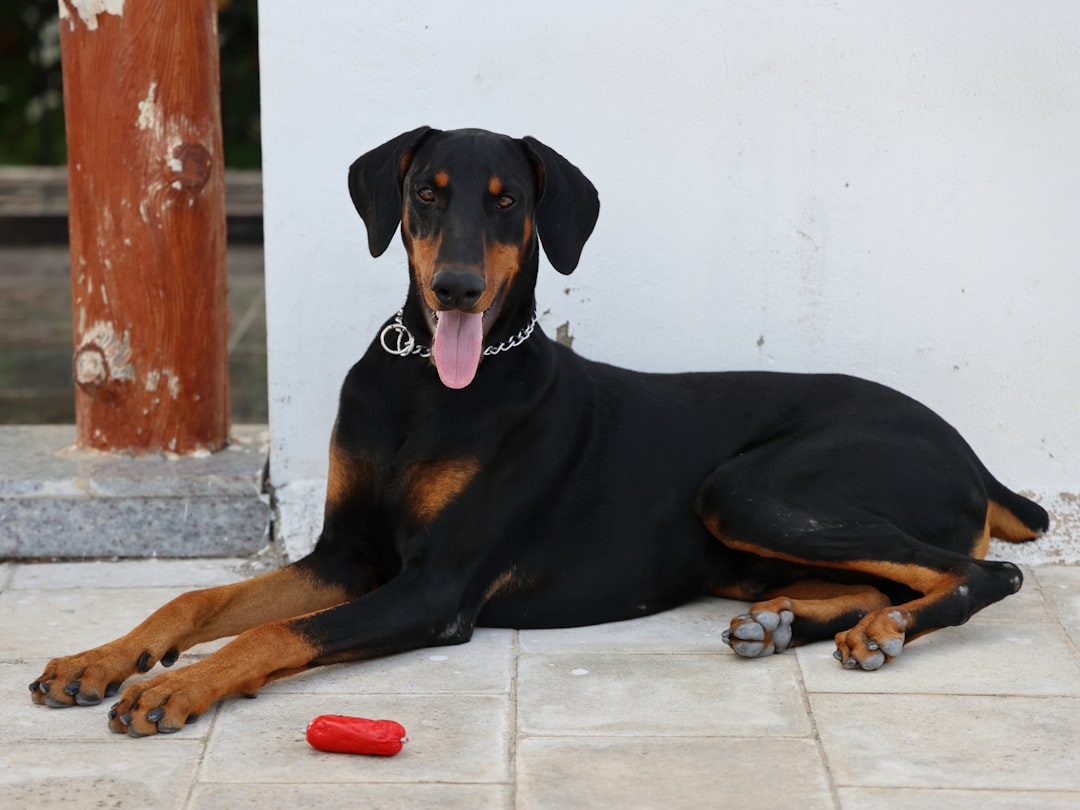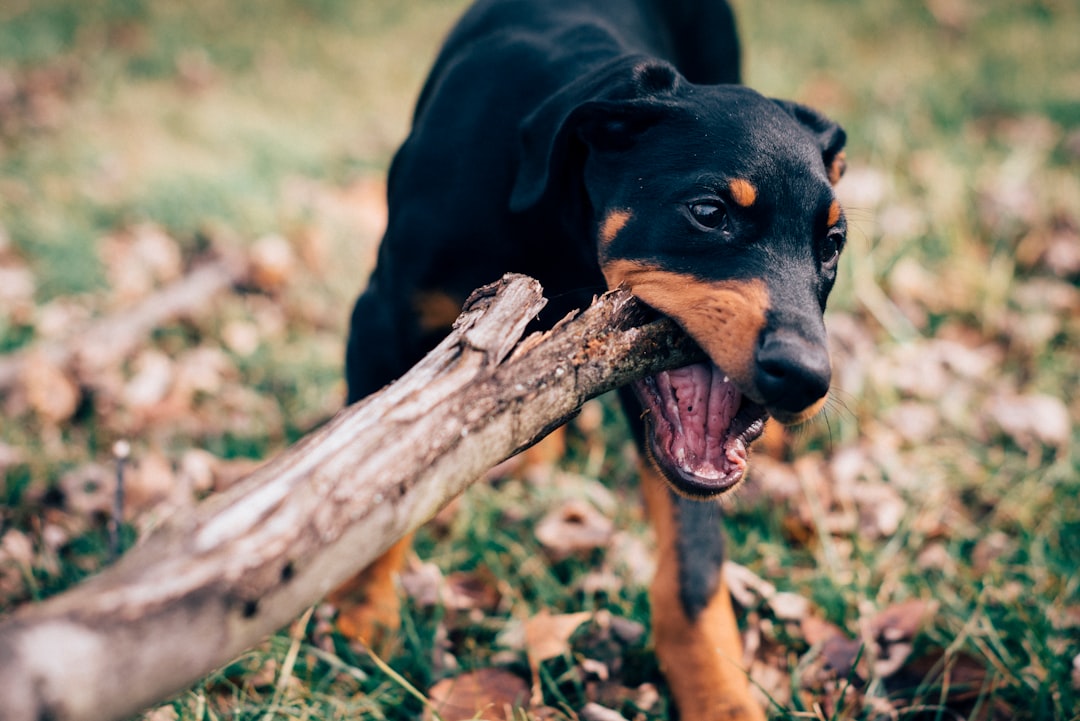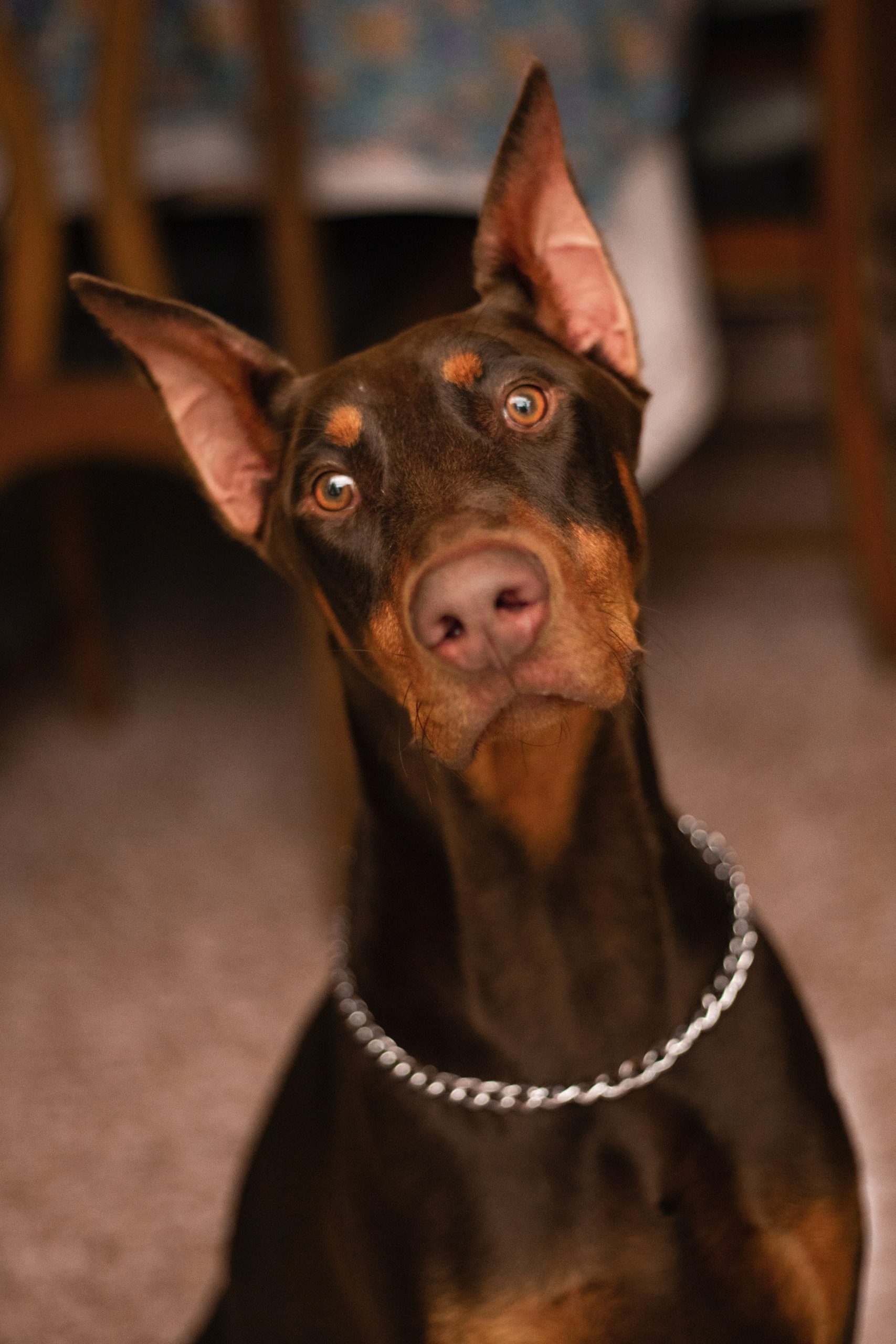The Doberman Pinscher: A History of Elegance, Loyalty, and Valor
The article explores the history, evolution, physical characteristics, temperament, and uses of Doberman Pinschers, highlighting their origins, development, and significance, as well as their affectionate nature and role as working dogs.
The Origins and Development of the Doberman Pinscher
The development of the Doberman Pinscher involved selective breeding of several different breeds, including shepherd dogs, Pinschers, Butcher Dogs, and Beaucerons, among others. This mix of breeds contributed to the breed’s evolution, resulting in the modern-day Doberman’s unique physical characteristics and temperament. For example, the sleek and powerful build of the Doberman, standing 24 to 28 inches at the withers and weighing 60 to 100 pounds, is a testament to the breed’s diverse ancestry [1].
Furthermore, specific dogs such as Graf Belling von Gronland and Alarich v. Thueringen have made significant contributions to the development of the Doberman Pinscher breed, with their desirable traits being selectively passed down through generations of the breed. These dogs have played a crucial role in shaping the Doberman’s distinct appearance and temperament, making them the loyal and intelligent companions known today. The breed’s evolution through selective breeding has ensured that the Doberman Pinscher possesses attributes of superior intelligence, strength, learning ability, and agility, which are essential for their historical and present-day roles as working dogs. These specific examples illustrate the ongoing development and refinement of the Doberman Pinscher breed, showcasing its rich and diverse lineage.
The Evolution of the Breed
The Doberman Pinscher is a fascinating example of the impact of selective breeding on the development of dog breeds. As a mix of various breeds such as shepherd dogs, Pinschers, Butcher Dogs, Beaucerons, German Pinschers, Manchester Terriers, and Greyhounds, the Doberman has a diverse lineage that has contributed to its unique characteristics. For example, the infusion of Manchester Terrier and Greyhound bloodlines has likely enhanced the Doberman’s agility and sleek build, while the influence of shepherd dogs and Pinschers may have contributed to its protective instincts and alertness.
Furthermore, the evolution of the breed through selective breeding has been a deliberate and meticulous process. Breeders have carefully chosen specific dogs to mate based on desirable traits, such as intelligence, strength, and loyalty, in order to refine and enhance the breed’s characteristics over time. For instance, Graf Belling von Gronland and Alarich v. Thueringen are two prominent examples of dogs that have made significant contributions to the development of the Doberman Pinscher, with their exemplary traits being passed down through generations, shaping the breed as we know it today.
Additionally, the establishment of the Doberman Pinscher Club of America in 1921 marked a pivotal moment in the breed’s history. The club’s commitment to preserving the unique qualities of the Doberman Pinscher and its adoption of the official German standard underscored the dedication to maintaining the breed’s integrity and distinct attributes. This emphasis on recognizing and upholding the breed’s exceptional qualities has been instrumental in shaping the Doberman Pinscher into the remarkable and revered breed it is today.
Physical Characteristics and Temperament of the Doberman Pinscher
The modern-day Doberman Pinscher has a rich and fascinating history that has shaped its distinctive physical attributes and temperament. Originating from a mix of cattle and shepherd dogs, the breed was later refined through the addition of Manchester terrier and Greyhound bloodlines, resulting in the sleek and elegant build that defines the modern Doberman Pinscher. This selective breeding process has contributed to the Doberman’s long head, flat skull, and long muzzle, giving it a regal and imposing appearance. Additionally, the natural ear set of the Doberman, which is high and folds down, or cropped to stand erect, is a defining physical characteristic that adds to the breed’s distinctiveness and elegance.
In terms of temperament, Doberman Pinschers are known for their unwavering loyalty and affectionate nature toward their owners, often earning them the endearing nickname of “velcro” dogs due to their strong attachment. Their intense loyalty and affection make them wonderful family pets, but they also demand attention and thrive on their owners’ companionship. Furthermore, their energetic and intelligent temperament requires regular exercise and mental stimulation, making them well-suited for various working roles such as protection, police, and search and rescue work. These characteristics have made the Doberman Pinscher a beloved breed for those seeking a devoted and intelligent companion with a strong work ethic.
 Historical and Present-Day Uses of Doberman Pinschers
Historical and Present-Day Uses of Doberman Pinschers
The Doberman Pinscher’s historical and present-day uses extend beyond being loyal companions, as they have excelled in various working roles. In addition to being affectionate family dogs, Dobermans have a long-standing reputation for their exceptional intelligence and strength, which has made them invaluable in several professional capacities. For instance, they have been widely employed as police dogs due to their keen sense of smell, agility, and unwavering determination, making them effective in tracking down suspects and detecting illicit substances. Their role as police dogs underscores their historical and continued significance in law enforcement and public safety.
Moreover, Doberman Pinschers have also played a pivotal role in search and rescue operations, leveraging their physical prowess and acute senses to locate and aid individuals in distress. Their agility and stamina enable them to navigate challenging terrains, while their sharp intellect allows them to respond to commands swiftly and effectively, making them indispensable assets in critical situations. This enduring legacy in search and rescue work underscores the breed’s historical and present-day relevance in humanitarian efforts and disaster response. Therefore, the Doberman Pinscher’s exceptional attributes have solidified its enduring importance in various professional capacities, emphasizing its continued role as a dependable and versatile working dog.
 Significance of the Doberman Pinscher
Significance of the Doberman Pinscher
The historical significance of the Doberman Pinscher in the United States and Canada extends beyond their role as pets or working dogs. Notably, during World War II, the United States Marine Corps adopted the Doberman Pinscher as the official war dog due to their exceptional loyalty, intelligence, and bravery. These dogs were trained to perform various tasks, including guarding military facilities, delivering messages, and detecting enemy presence. Their unwavering dedication and remarkable abilities made them an invaluable asset during the war, solidifying their place in history as more than just a beloved family pet.
Furthermore, the Doberman Pinscher’s polished appearance and fearless temperament have made them a prominent figure in the world of dog shows. Their striking physique, coupled with their confident and alert demeanor, has garnered appreciation from judges and enthusiasts alike. This recognition not only highlights the breed’s physical attributes but also underscores the importance of their temperament, which reflects their original purpose as protective and vigilant companions. The breed’s consistent presence and success in various dog shows have contributed to their continued admiration and popularity, showcasing their enduring significance in the modern-day canine community.
Conclusion
The Doberman Pinscher’s historical significance is undeniable, with its origins dating back to 1870, when German tax collector Karl Friedrich Louis Dobermann created the breed to serve as a loyal and protective companion. Over time, the Doberman Pinscher has become renowned for its sleek and elegant build, with a long head, flat skull, and long muzzle, making it a striking and distinctive breed. Additionally, the breed’s natural ear set, which is high and folds down, or stands erect if cropped, adds to its unique appearance. These physical attributes have contributed to the breed’s recognition and popularity, especially in the world of dog shows and competitions.
Furthermore, the Doberman Pinscher’s temperament is equally remarkable, as it is known for being affectionate, intensely loyal, and demanding of attention, earning the nickname “velcro” dogs for their strong attachment to their owners. Their energetic and intelligent nature makes them ideal for various roles, including working dogs for protection, police, and search and rescue work, highlighting their adaptability and usefulness in a variety of settings. This versatility has cemented the Doberman Pinscher’s position as a breed of great historical and present-day significance, valued for its unwavering loyalty, physical prowess, and exceptional intelligence.


